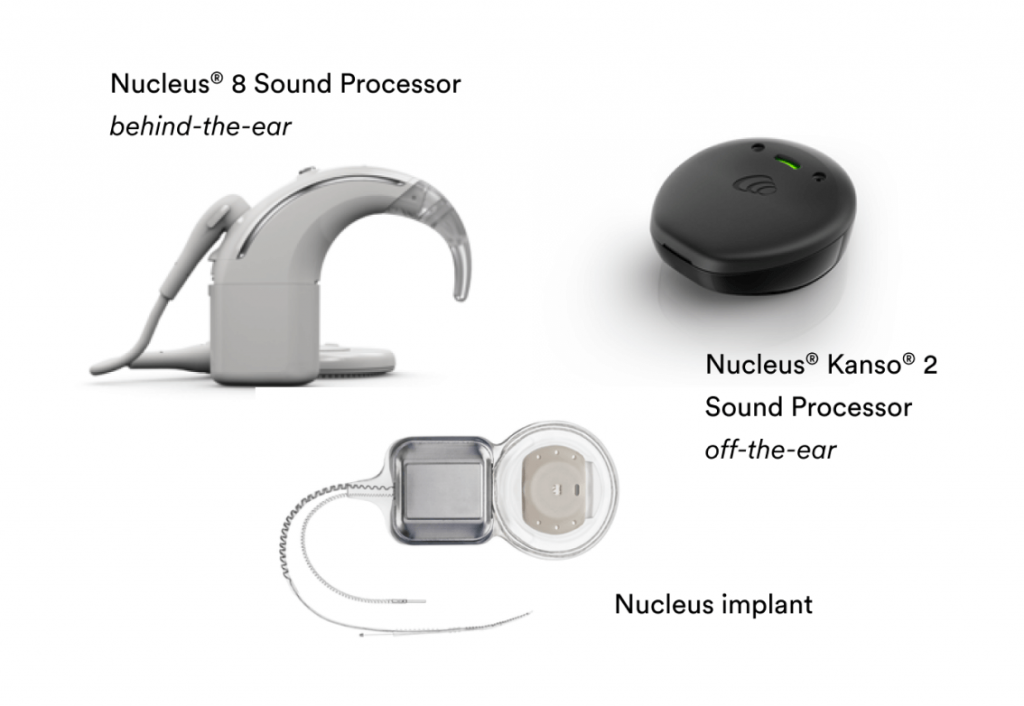
Hearing loss can significantly impact an individual’s quality of life, affecting communication, social interactions, and overall well-being. While hearing aids can be beneficial for many, they may not provide sufficient benefit for those with severe to profound sensorineural hearing loss. For these individuals, cochlear implants offer a potential solution to restore or significantly improve hearing.
The Difference Between Hearing Aids and Cochlear Implants:
It’s important to distinguish between hearing aids and cochlear implants. Hearing aids amplify sound, making it louder for the ear to detect. They rely on the existing hair cells in the inner ear (cochlea) to function. In contrast, cochlear implants bypass the damaged hair cells and directly stimulate the auditory nerve, sending electrical signals to the brain, which interprets them as sound.
How Cochlear Implants Work:
When the hair cells in the cochlea are damaged or missing, they cannot effectively convert sound vibrations into electrical signals. Cochlear implants bypass this damaged system and provide direct electrical stimulation to the auditory nerve. A cochlear implant system consists of two main parts:
- External Components:
- Microphone: This picks up sound from the environment.
- Speech Processor: This device, worn behind the ear or on the body, processes the sound picked up by the microphone. It filters and digitizes the sound, converting it into coded electrical signals.
- Transmitter (Headpiece/Coil): This transmits the coded signals wirelessly to the internal implant.
- Internal Components:
- Receiver/Stimulator: This is surgically implanted under the skin behind the ear. It receives the signals from the transmitter and converts them into electrical impulses.
- Electrode Array: This thin wire is inserted into the cochlea. It contains multiple electrodes that stimulate different parts of the auditory nerve, corresponding to different sound frequencies.
The Process of Hearing with a Cochlear Implant:
- The microphone picks up sound.
- The speech processor analyzes and digitizes the sound.
- The transmitter sends coded signals to the internal receiver/stimulator.
- The receiver/stimulator converts the signals into electrical impulses.
- The electrode array delivers the electrical impulses to the auditory nerve.
- The auditory nerve sends the signals to the brain, where they are interpreted as sound.
Who is a Candidate for a Cochlear Implant?
Cochlear implants are typically considered for individuals with:
- Severe to profound sensorineural hearing loss: This means that traditional hearing aids provide limited or no benefit.
- Realistic expectations: It’s important to understand that cochlear implants do not restore normal hearing. They provide a different way of hearing, and the sound quality is often described as different from natural hearing.
- Motivation and commitment to rehabilitation: Post-implantation rehabilitation is crucial for learning to interpret the new sounds.
Specific Candidacy Criteria:
- Adults: Adults are typically considered if they have moderate to profound sensorineural hearing loss in both ears and receive limited benefit from hearing aids.
The Evaluation Process:
A comprehensive evaluation is conducted to determine candidacy for a cochlear implant. This usually involves:
The Surgical Procedure:
- Audiological Evaluation: This includes a series of hearing tests to assess the type and degree of hearing loss.
- Medical Evaluation: A physical examination and review of medical history to ensure the individual is healthy enough for surgery.
- Imaging Studies (CT scan and possibly MRI): These scans provide detailed images of the inner ear and surrounding structures to ensure there are no anatomical abnormalities that would prevent implantation.
The cochlear implant surgery is typically performed under general anesthesia in a few hours. The surgeon makes a small incision behind the ear and creates a small recess in the mastoid bone (behind the ear) to house the receiver/stimulator. The electrode array is then carefully inserted into the cochlea via the round window.
Post-Surgery and Activation:
- Recovery: Most individuals can go home the same day or the day after surgery. There may be some discomfort, swelling, and bruising around the incision site, which usually resolves within a few days.
- Healing Period: It takes several weeks for the incision to heal before the external components can be activated.
- Activation (Switch-On): About 4 weeks after surgery, the audiologist will activate the external components and program the speech processor. This involves adjusting the settings to suit the individual’s specific hearing needs.
- Rehabilitation: Following activation, regular follow-up appointments with an audiologist are crucial. These sessions focus on auditory training, and adjusting the processor settings to optimize hearing.
What to Expect After Activation:
- Initial Sounds: The first sounds heard through a cochlear implant are often foreign and described as different from natural hearing. They may sound robotic or mechanical.
- Learning to Hear: The brain needs time to learn to interpret the new electrical signals as meaningful sound. This process requires consistent use of the implant and active participation in rehabilitation. It is critical to keep using the device even after implantation.
- Progressive Improvement: With consistent use and rehabilitation, most individuals experience significant improvement in their ability to hear and understand speech 6-12 months after implantation.
- Varied Outcomes: The degree of benefit from a cochlear implant varies from person to person. Factors that can influence outcomes include the duration of hearing loss before implantation, the age at implantation, and the individual’s commitment to rehabilitation.
Benefits of Cochlear Implants:
- Improved ability to hear and understand speech, often without lip-reading in noisy environments.
- Enhanced communication skills.
- Increased awareness of environmental sounds.
- Improved quality of life and social interactions.
Risks and Complications:
As with any surgical procedure, there are some potential risks associated with cochlear implant surgery, including:
- Infection
- Bleeding
- Dizziness or balance problems
- Tinnitus (ringing in the ears)
- Facial nerve damage (rare)
- Device malfunction (rare)
Conclusion:
Cochlear implants have revolutionized the treatment of severe to profound sensorineural hearing loss, offering a significant improvement in hearing and quality of life for many individuals. While it’s a significant decision, understanding the process, benefits, and risks can help patients and their families make informed choices. If you or someone you know is experiencing severe hearing loss, make an appointment with our otolaryngology team today to determine if a cochlear implant is a suitable option.



